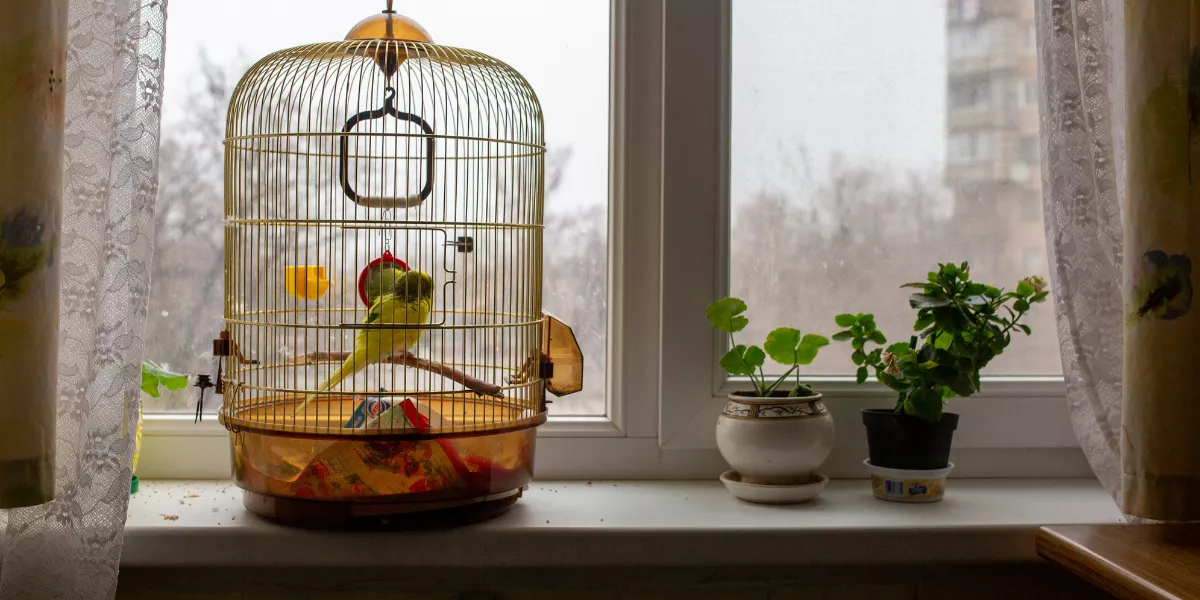
When picking a cage for your bird, match the dimensions to your bird's size for ample space to move. Make sure there's room for them to stretch wings, hop around, and play comfortably. Small birds like finches need wider cages for horizontal flight, while larger birds like parrots require spacious cages for climbing and wing-flapping. Aim for a cage at least twice the wingspan of your bird for a cozy home. By considering these factors, you can choose the right size and type of cage to keep your feathery friend happy and healthy.
Bird Size and Cage Dimensions
When selecting a bird cage, ensure that its dimensions correspond to your bird's size to guarantee adequate space for movement and comfort. Birds need room to stretch their wings, hop around, and play, so it's crucial to choose a cage that accommodates their size and activity level. For example, small birds like finches or canaries require cages that are wider rather than taller to allow for horizontal flight. On the other hand, larger birds such as parrots or cockatoos need cages that are spacious enough for them to climb, flap their wings, and have various perches and toys.
Consider the wingspan and tail length of your bird when selecting a cage. A good rule of thumb is to choose a cage that's at least twice the wingspan of your bird so they can move around comfortably without feeling cramped. Additionally, ensure that the spacing between the bars is appropriate for your bird's size to prevent them from getting stuck or injured. By selecting the right cage dimensions for your bird, you can provide them with a safe and comfortable living space that meets their needs.
Cage Material Considerations
Choosing the right material for your bird cage is essential for ensuring durability and safety. When selecting a cage for your feathered friend, consider materials like stainless steel, wrought iron, or powder-coated metal. These options are sturdy, resistant to corrosion, and easy to clean, making them ideal for long-term use. Avoid cages made of materials like wood or plastic, as they can be easily damaged and may not withstand the wear and tear of a bird's beak and claws.
Stainless steel cages are highly durable, non-toxic, and resistant to rust, making them a top choice for bird owners. Wrought iron cages are also a good option, providing strength and stability. Powder-coated metal cages offer durability with added protection against scratches and chipping. Always ensure that the cage material is lead and zinc-free to prevent potential toxicity to your bird.
Cage Type Based on Bird Behavior
Considering your bird's behavior is crucial when determining the most suitable cage type. For active and playful birds like parakeets or lovebirds, a cage with horizontal bars and plenty of space for climbing and flying is ideal. These birds enjoy exploring and need room to move around.
On the other hand, for more shy and reserved birds such as finches or canaries, a cage with more vertical bars and cozy corners for nesting may be better suited. These birds prefer to perch and observe their surroundings from a safe place.
If your bird tends to be a messy eater or enjoys throwing its food around, a cage with a built-in seed guard can help contain the mess and make cleaning easier. Birds that are prone to nipping at cage bars may benefit from a cage with bar spacing that prevents them from getting their beaks stuck.
Additionally, consider the door placement and size based on your bird's comfort with human interaction. By observing your bird's behavior closely, you can choose a cage type that caters to their specific needs and habits.
Cage Maintenance and Cleaning Tips
To maintain a clean and healthy living environment for your bird, regular cage cleaning is key. Start by removing any uneaten food, soiled bedding, and droppings daily. Wipe down perches, toys, and accessories with a bird-safe cleaner weekly to prevent bacterial growth.
Replace liners at least once a week and deep clean the entire cage monthly. When deep cleaning, use a pet-safe disinfectant to scrub all surfaces thoroughly, rinse well, and allow it to dry completely before reintroducing your bird. Pay special attention to corners, crevices, and any hidden areas where dirt and bacteria can accumulate.
Additionally, regularly inspect the cage for any signs of wear and tear, such as rust or loose wires, to ensure your bird's safety. By establishing a consistent cleaning routine, you create a comfortable and healthy habitat for your feathered friend.
Conclusion
When choosing a cage for your bird, consider the size of your bird, the dimensions of the cage, the material it's made of, and the behavior of your bird.
Proper maintenance and cleaning are also important factors to keep your bird healthy and happy.
By taking these factors into consideration, you can ensure that your bird has a safe and comfortable living environment.




